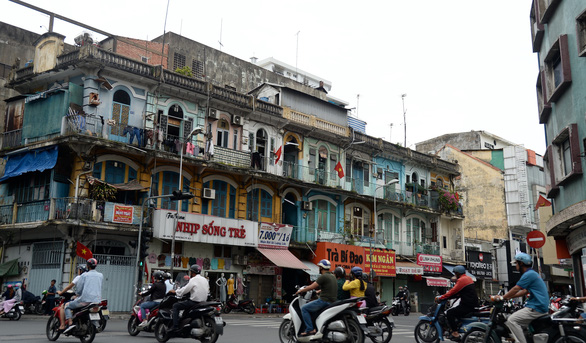For a melting pot of culture like Ho Chi Minh City, it would be almost impossible to nail down a single characteristic or personality trait as the city’s brand, but a new urban plan delineating nine boroughs, each with its own distinct identity, might be a solution.
In my opinion, cultural diversity should be laid forward as the underpinning of Ho Chi Minh City’s identity as we try to promote the southern metropolis to the world.
Instead of focusing on the city’s official map, we should reimagine the city as nine boroughs, each with its own cultural eccentricities, which attract a diverse range of investment and tourism opportunities.
With this plan, the city’s resources will not be centered solely in downtown districts, but rather distributed throughout each neighborhood, creating ‘mini-cities’ that offer new perspectives on the umbrella city’s identity.
The first borough would be a downtown area characterized by the juxtaposition between colonial and modern architecture. It would include historical sites around the Independence Palace, modern high-rises along the Saigon River, and other neighborhoods in District 1.
It would also include multiple cultural destinations and events, namely Nguyen Hue Pedestrian Street and an ao dai festival.
Meanwhile, a series of new skyscrapers along the Saigon River that are large enough to draw parallels to those along the Moscow River in Russia will serve as the highlight of the cityscape.
The area surrounding Cho Lon Market in District 5 will comprise the ‘Chinatown’ borough, set apart from the rest of the city by its Guangzhou-style architecture where the Chinese-Vietnamese community will celebrate holidays such as the Lunar New Year, Mid-Year Festival, and Mid-Autumn Festival. History buffs who visit the area will also appreciate the Nghia An Hoi Quan Pagoda while others might enjoy the new businesses popping up on Le Dai Hanh Street.
A third borough will run along the border of Binh Thanh District and the surrounding area where lessons taken from Seoul, South Korea will help to preserve Nguyen Dynasty architecture, including the Quy Citadel, Phung Citadel, Van Thanh Temple, and the Tomb of the Marshal in Ba Chieu, while new neighborhoods, such as the high rises on Nguyen Huu Canh Street, are nurtured.
The current Binh Thanh District People’s Committee headquarters, a former official building during the French colonial period, could be transformed into a museum in order to preserve memories from Ho Chi Minh City’s past.
Coastal Can Gio District should also be considered a separate borough that mirrors the beach-and-forest tourism model of Spain’s Valencia. The Nghinh Ong Festival, a traditional fishermen’s celebration when people pray for bumper hauls of fish, safe voyages, and peace for the nation, could be pushed as a landmark event in the area.
Outlying Cu Chi District could be modeled as a high-tech, agricultural zone in the image of Singapore.
The eastern innovative area, which is Thu Duc City, could proceed on the track set by Ho Chi Minh City authorities to become the heart of tech innovation and education in the southern metropolis.
Meanwhile, the eastern area of the city could be transformed into an industrial spearhead, with traditional cai luong performance art and influences from the Mekong Delta lifestyle as its cultural backbone.
The southern domain of the city could be reserved for sports and leisure, including SUP, kayaking, and jet surfing, while the northern region should be turned into a science and historical center where a cultural event under the theme of ’18 Villages of Betel Gardens’ -- a bastion of resistance against French colonizers in southern Vietnam -- could be found.
In the northern, southern, western, and eastern regions of Ho Chi Minh City, all blank slates have plenty of room for positive developments, provided they are to be guided in the right direction.
The goal of my nine-borough plan, after all, is to steer visitors’ awareness away from District 1 and introduce them to other cultural treasures throughout the city.
This plan can only be achieved through synchronized actions, including through a website and call center which provides comprehensive information for tourists visiting the city; through the prioritization of MICE (meetings, incentives, conferences, and exhibitions) tourism that brings international leaders and students to different parts of the city; and through the encouragement of private investments into public squares, parks, office buildings, and other facilities.
The original story was written in Vietnamese by Le Hai and translated into English by Tuoi Tre News, in response to the 'Ho Chi Minh City Goes Global' contest, an open forum for readers to contribute their ideas and solutions to raise the position of Saigon - Ho Chi Minh City in the international arena.
The contest is co-organized by Tuoi Tre (Youth) newspaper and the Ho Chi Minh City Department of External Relations to prepare for the celebration of National Day on September 2.
For further information and how to take part, please click here.
Like us on Facebook or follow us on Twitter to get the latest news about Vietnam!



























